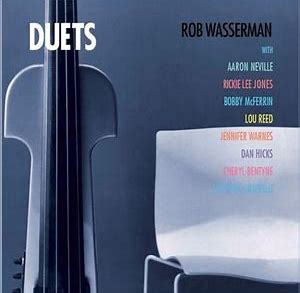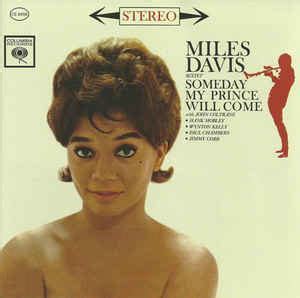
Ofra and Eli Gershman are two of the nicest people in audio, and they have been making outstanding speakers for a long time. Nineteen years ago a friend of mine who owned a high-end audio shop became a Gershman Acoustics dealer. I ended up purchasing a pair of Gershman Avant Garde speakers and enjoyed them for a few years.
The Gershman Acoustics listening room is always a treat at shows. Ofra and Eli love music, and it shows in what they choose to play. And, if you live anywhere near Toronto, they have just opened up a new state-of-the-art listening room.
Since Becky and I attend shows together these days, she got an inside look at Gershman Acoustics by interviewing Ofra for our “Women in Audio” series. If you haven’t read that interview, you can find it here.
Description
The Gershman Studio II speakers are the smallest made by Gershman Acoustics, and they retail for $3,795/pr. They are slightly larger and heavier than most stand-mounted monitors at 18 inches tall, 10 inches wide in the front and 12 inches deep. Probably the first thing you would notice about these speakers is that the fit and finish of the cabinets in piano black is magnificent. And that finish is the first sign of the quality you will find in how these speakers are designed.
The Studio II is a two-way speaker in a sealed box. It uses an eight-inch woofer/midrange driver made from an extra-thick black anodized aluminum driver with a four-layer coil. It also uses a dual-chamber for the one-inch coated silk dome tweeter. The crossovers are handmade with point-to-point soldering.
Setting Them Up
I used the Gershman Studios IIs in my reference system powered by the PureAudio One Integrated Amplifier with Audience FrontRow cables. The source was my AMG V12 turntable with their 12-inch Turbo tonearm. The cartridge system was the DS-Audio Master1 Optical cartridge system.
I decided that the sweet spot for these Studio IIs was to place them seven feet apart with the fronts of the speakers five feet from the wall behind them. My listening position was ten feet from the speakers. They were toed in slightly, pointed a little beyond the outside of my shoulders.
Listening
I have never heard a Gershman speaker that didn’t have deep, impactful bass, and the Studio IIs are no exception. I’m not saying that they have great bass for a speaker of their size. They just have great bass that is musical and dynamic. The bass is textured with great attack and even better decay.
During the break-in, I used them in my video system but didn’t hook up the subwoofer. They fooled me one night while I was watching the latest version of the movie, A Star Is Born. I could feel the bass so strong that I got up and looked just to be sure the subs weren’t connected. They weren’t!
The Studio IIs aren’t all about the bass though! They are very transparent speakers. I should explain that what I’m calling transparency some of you may call immediacy. To me, transparency is immediacy that is not forward-sounding.
And while the Studio IIs are transparent in the midrange, their transparency extends from the deepest bass notes to the shimmer of the cymbals. They also have a beautifully coherent sound that combines with a very musical sense of tonality and creates an engaging listening experience. The resulting sound is robust and full-bodied with a big tone that is not overly warm or the least bit lacking in clarity.
The Studio IIs also have dynamics in spades. Again, forget that they are a smaller speaker. Their dynamics are impressive for a speaker of any size. The dynamics are startling, the kind that made me sit up and listen. Listening to Muddy Waters sing the blues, both the dynamics and the micro-dynamics from these speakers were impressive.
With the dynamics, there is also an exceptional scale. Scale is something that is very important to me in a system. By scale, I mean the ability of a speaker system to project lifelike size as well as volume.
Listening to a Couple of LPs
Rob Wasserman’s Duets

I carry this recording around at audio shows and use it to evaluate systems. Very few systems at any price can hold together when I play the cut “Angel Eyes.” On this cut, Cheryl Bentyne’s voice goes from very soft to very loud, then back down to almost a whisper before exploding to end the song. It is a real test of a system’s dynamics, harmonics and ability to sound as good when played very softly or very loudly. The Studio IIs allowed Bentyne’s voice to be heard with purity and dynamics, and Wasserman’s bass sounded full and had great tone and beautiful harmonics. I didn’t just listen to this one song though because each duet was so engaging.
Miles Davis’ Someday My Prince Will Come

I’m a big Miles Davis fan, at least a fan of his earlier work. This is one of my very favorite of his recordings. I listened to and much prefer the mono original, but if you have to have a stereo recording, you can’t beat the Analogue Productions 45-RPM version.
This is beautiful, moving music that should demand your attention and create an emotional experience. It did for me. I immediately sat up and heard Miles’ trumpet with its great bite without a trace of electronic edginess. Then there were Jimmy Cobb’s cymbals, such great attack, big tone, and great decay. The drums also had real impact and plenty of air and decay. The scale of the instruments and the power of the performance was so lifelike.
Conclusion
The Gershman Acoustic Studio II speakers are the real deal! They have great tone and soul. Yes, the bass is great, the soundstage is large and coherent, and the midrange is transparent and it sounds alive. But keeping the main thing the main thing, these speakers make recorded music sound remarkably like live music.


You cannot beat a great monitor, did i miss the price?
Sorry we omitted it. We are checking and will add to post.
Geoffrey, the price is $3,795/pr. I’ve also updated the post.
thanks
Excellent review. The music chosen is good to know as well. Thank you.
Jack, do you think the younger generations, especially with the hi-def recording of today, will ever really experience different versions of a recording? For instance, do you think in 5 or 10 more years we will be able to say that so-and-so’s re-release/whatever of The National’ s High Violet album is better… since the first one was so thick it throws off the average VTA? similar to how you can say that such-and-such version of this Miles album is preferred? Or is that lost to my generation?
Looking for exit-level speakers.
Probably small monitors.